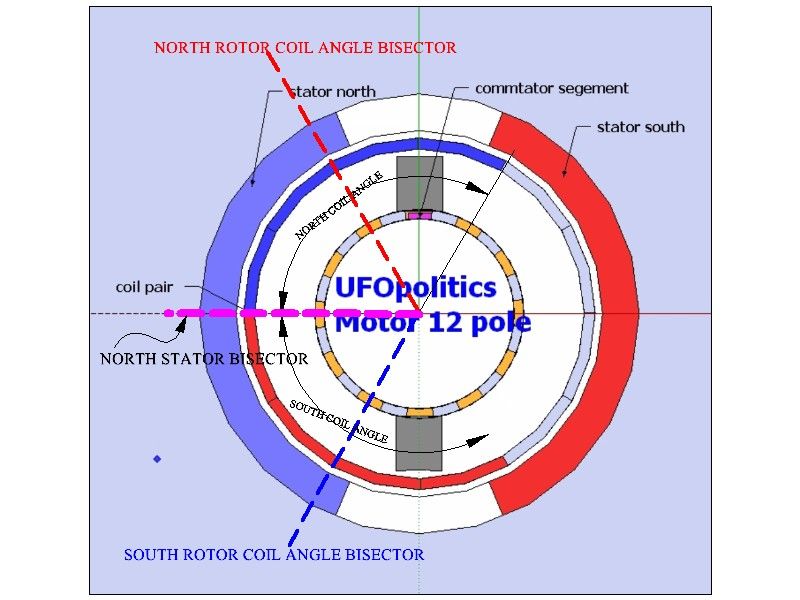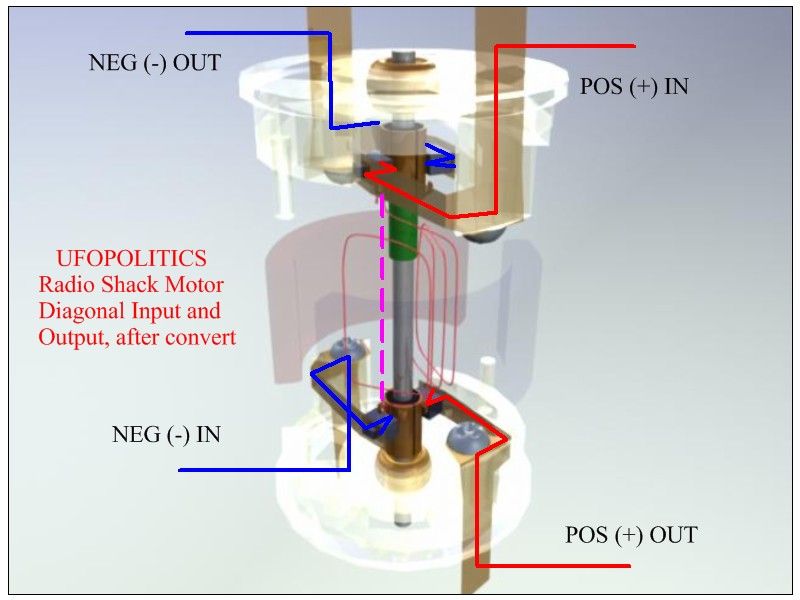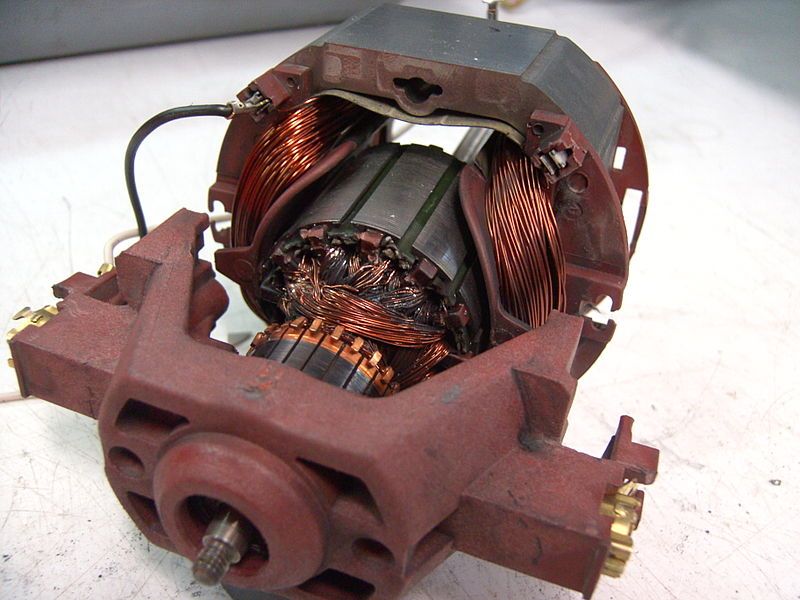Hello Dear John
Hello Dear John,
It is the way to go...TO FIRST Concentrate in just ONE Pair, as P-1 to get timing correct..."The rest of Pairs WILL follow up"
I Realize NOW, that you are referring to the Bisector from PAIR P-1, and NOT the Bisector for each Individual Coil in the Pair, like I have displayed in my previous explanation of your diagram. Now, the PAIR BISECTOR is just a DEAD MAGNETIC POINT.
We could use it "AS REFERENCE POINT ONLY" but in "Actual Response" related to Motor behavior it will do absolutely NADA. As it will "Not Exist" in some other Designs like the Pentagons, Star of David or the Three Single Poles...
The Right Way of looking at this, as also to make everyone understand it right...is referring to EACH COIL BISECTOR IN THE PAIR.
As it will also apply to ALL MY DESIGNS, and not just to the "P-Series".
I want You to understand this, before proceeding...
Now, every time I show a Wiring Diagram for specific poles configurations Armature is Always Set at a "Balanced/Neutral Timing", meaning, we could rotate that motor either CW or CCW, by just reversing Input Polarity and obtain same results both ways. But, I never said that was the strongest set up for motor performance.
For best "Fine tuning" of performance we MUST FIRST decide our Motor MAIN Operational Direction to test it.
Now, let's say we want motor to rotate CW (Like it is set up in this drawings). "Pair P-1 Bisector" is at Zero Degree aligned to North Stator Bisector (Balanced/Neutral Timing). Now IF We want Motor to go faster and heavier torque, while keeping same CW Direction, then we should move P-1 Bisector towards the Minus Degrees, by moving brushes CCW in order to "meet" commutator element BEFORE reaching the Zero Degrees.
Now, let me explain same thing but going by Clock Timing...
Then let's say, the PAIR P-1 Bisector and North Stator Bisector are aligned EXACTLY at 9 O'clock (Zero Degrees right?)...Then to Increase torque We must move towards 8 O'clock or even 7 O'clock...as long as we DO NOT PASS 9 O'clock WITH the North Coil Bisector in P-1
In my previous comment you have cited I wrote:
See John, we had this kind of confused... because we were referring to two different Bisectors...
You were going by the PAIR BISECTOR, which is just the Intersection of both Coils in the Pair..That point-area is actually a DEAD MAGNETIC POINT, so we could use it...just for "reference point" to whole Pair, to arrange timing...but ACTUALLY, who do all the REAL Work related to Real Magnetic Interactions...are the TWO Individual Coil Bisectors in the Pair, as their positioning to the Stators Bisectors
Therefore Your Graphic makes perfect sense to Me, as also My previous post-description you have cited.
In Graphic you have:
1) At -11.25 degrees delivers a High Torque of 0.30 (That is setting P-1 Bisector around eight O'clock)
2)While when it goes Zero Degrees it collapses to @ 0.23 (Balanced Neutral/Timing)
3) Then at +11.25 Degrees it goes Up again @0.28 Nm (Here Motor is being aligned MAINLY on Attraction Mode, since SOUTH COIL BISECTOR is closer to NORTH STATOR BISECTOR, and NORTH COIL BISECTOR is further away from N-Stator Bisector.
So, let me know, John...If now you understand my explanation...
Thanks and regards
Ufopolitics
Originally posted by JohnStone
View Post
Hello Dear John,
It is the way to go...TO FIRST Concentrate in just ONE Pair, as P-1 to get timing correct..."The rest of Pairs WILL follow up"

I Realize NOW, that you are referring to the Bisector from PAIR P-1, and NOT the Bisector for each Individual Coil in the Pair, like I have displayed in my previous explanation of your diagram. Now, the PAIR BISECTOR is just a DEAD MAGNETIC POINT.
We could use it "AS REFERENCE POINT ONLY" but in "Actual Response" related to Motor behavior it will do absolutely NADA. As it will "Not Exist" in some other Designs like the Pentagons, Star of David or the Three Single Poles...
The Right Way of looking at this, as also to make everyone understand it right...is referring to EACH COIL BISECTOR IN THE PAIR.
As it will also apply to ALL MY DESIGNS, and not just to the "P-Series".
I want You to understand this, before proceeding...
Now, every time I show a Wiring Diagram for specific poles configurations Armature is Always Set at a "Balanced/Neutral Timing", meaning, we could rotate that motor either CW or CCW, by just reversing Input Polarity and obtain same results both ways. But, I never said that was the strongest set up for motor performance.
For best "Fine tuning" of performance we MUST FIRST decide our Motor MAIN Operational Direction to test it.
Now, let's say we want motor to rotate CW (Like it is set up in this drawings). "Pair P-1 Bisector" is at Zero Degree aligned to North Stator Bisector (Balanced/Neutral Timing). Now IF We want Motor to go faster and heavier torque, while keeping same CW Direction, then we should move P-1 Bisector towards the Minus Degrees, by moving brushes CCW in order to "meet" commutator element BEFORE reaching the Zero Degrees.
Now, let me explain same thing but going by Clock Timing...
Then let's say, the PAIR P-1 Bisector and North Stator Bisector are aligned EXACTLY at 9 O'clock (Zero Degrees right?)...Then to Increase torque We must move towards 8 O'clock or even 7 O'clock...as long as we DO NOT PASS 9 O'clock WITH the North Coil Bisector in P-1
In my previous comment you have cited I wrote:
I got here your drawing that I have added the Bisectors that You MUST consider in order to understand this Tech.
I have displayed the North and South Coils Angles with an arrow limiting their scope, as well as their respective Bisectors.
Also have displayed the North Stator Bisector (Magenta).
Now the closer that you Fire the North Rotor Coil Bisector to the Stator Bisector-At the Start of Commutator Element sweep-The More Torque as throw out range gain (Your Machine would have then more Speed and torque)-... As you would be also approaching South Rotor Bisector to South Stator Bisector...Your timing adjustment will be based MAINLY on Repulsions Interactions here.
I have displayed the North and South Coils Angles with an arrow limiting their scope, as well as their respective Bisectors.
Also have displayed the North Stator Bisector (Magenta).
Now the closer that you Fire the North Rotor Coil Bisector to the Stator Bisector-At the Start of Commutator Element sweep-The More Torque as throw out range gain (Your Machine would have then more Speed and torque)-... As you would be also approaching South Rotor Bisector to South Stator Bisector...Your timing adjustment will be based MAINLY on Repulsions Interactions here.
You were going by the PAIR BISECTOR, which is just the Intersection of both Coils in the Pair..That point-area is actually a DEAD MAGNETIC POINT, so we could use it...just for "reference point" to whole Pair, to arrange timing...but ACTUALLY, who do all the REAL Work related to Real Magnetic Interactions...are the TWO Individual Coil Bisectors in the Pair, as their positioning to the Stators Bisectors
Therefore Your Graphic makes perfect sense to Me, as also My previous post-description you have cited.
In Graphic you have:
1) At -11.25 degrees delivers a High Torque of 0.30 (That is setting P-1 Bisector around eight O'clock)
2)While when it goes Zero Degrees it collapses to @ 0.23 (Balanced Neutral/Timing)
3) Then at +11.25 Degrees it goes Up again @0.28 Nm (Here Motor is being aligned MAINLY on Attraction Mode, since SOUTH COIL BISECTOR is closer to NORTH STATOR BISECTOR, and NORTH COIL BISECTOR is further away from N-Stator Bisector.
So, let me know, John...If now you understand my explanation...
Thanks and regards

Ufopolitics








 [/IMG]
[/IMG] [/IMG]
[/IMG]
Comment